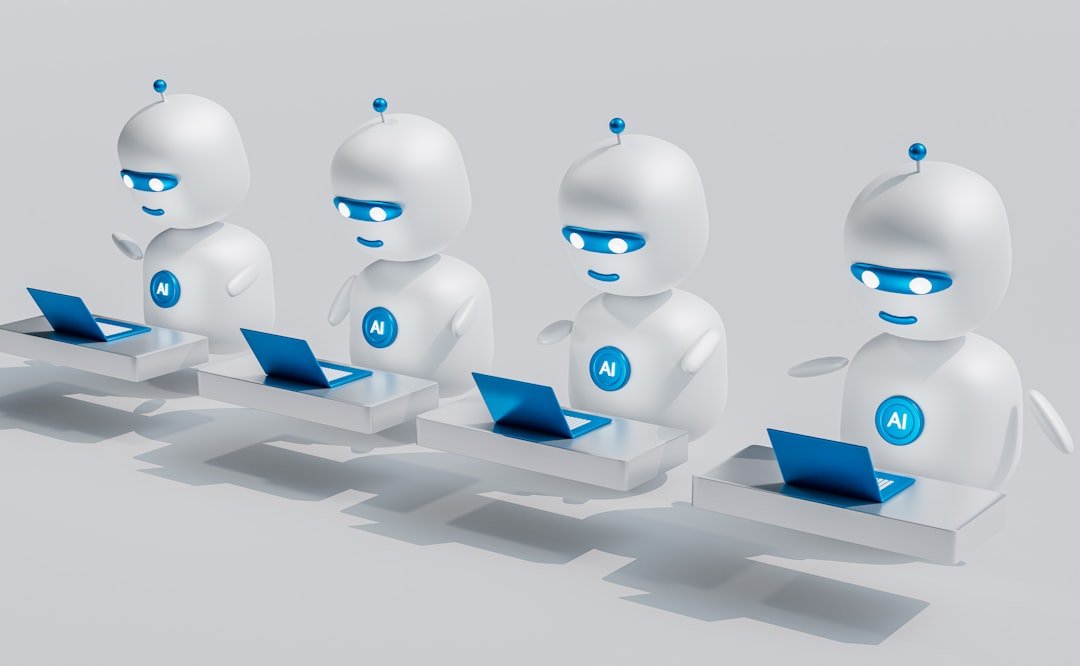Chatbots are sophisticated software applications designed to simulate human conversation through artificial intelligence (AI) and natural language processing (NLP). They can engage with users via text or voice, providing instant responses to inquiries, guiding users through processes, and even executing transactions. In the realm of customer service and marketing, chatbots serve as a bridge between businesses and consumers, offering a seamless interaction experience that can significantly enhance operational efficiency.
The mechanics behind chatbots involve a combination of pre-defined scripts and machine learning algorithms. Basic chatbots operate on a rule-based system, responding to specific keywords or phrases. More advanced versions leverage AI to understand context, sentiment, and user intent, allowing for more nuanced conversations.
This capability enables businesses to automate responses to frequently asked questions, provide personalized recommendations, and even facilitate sales—all while maintaining a human-like interaction that can improve customer satisfaction.
Key Takeaways
- Chatbots are AI-powered programs designed to simulate human conversation and can be used in customer service and marketing to interact with customers and prospects.
- Using chatbots in customer service and marketing can lead to benefits such as 24/7 availability, faster response times, cost savings, and improved customer satisfaction.
- Chatbots can improve customer engagement and satisfaction by providing personalized interactions, answering queries promptly, and offering relevant product recommendations.
- Chatbots play a crucial role in lead generation and sales by qualifying leads, nurturing prospects, and guiding them through the sales funnel.
- Chatbots impact personalizing customer interactions by using data to tailor responses, offer personalized recommendations, and create a more personalized customer experience.
The Benefits of Using Chatbots in Customer Service and Marketing
24/7 Support and Enhanced Customer Satisfaction
One of the most significant advantages is the ability to provide 24/7 support. Unlike human agents, chatbots do not require breaks or time off, ensuring that customers can receive assistance at any hour. This constant availability not only enhances customer satisfaction but also reduces the workload on human staff, allowing them to focus on more complex inquiries.
Scalability and Efficient Handling of Interactions
Moreover, chatbots can handle a high volume of interactions simultaneously, which is particularly beneficial during peak times or promotional events. For instance, during a product launch, a well-implemented chatbot can manage thousands of inquiries without compromising response time or quality.
Data Collection and Refining Marketing Strategies
This scalability is crucial for businesses looking to maintain a competitive edge in an increasingly digital marketplace. Additionally, chatbots can gather valuable data on customer preferences and behaviors, enabling businesses to refine their marketing strategies and improve service delivery.
How Chatbots Can Improve Customer Engagement and Satisfaction

Customer engagement is a critical metric for any business aiming to foster loyalty and drive sales. Chatbots play a pivotal role in enhancing engagement by providing personalized interactions that resonate with users. By utilizing data from previous interactions, chatbots can tailor their responses to meet individual customer needs, creating a more relevant experience.
For example, if a customer frequently inquires about specific products, the chatbot can proactively suggest related items or promotions, thereby increasing the likelihood of conversion. Furthermore, the immediacy of chatbot responses significantly boosts customer satisfaction. In an age where consumers expect instant gratification, waiting for human agents to respond can lead to frustration.
Chatbots eliminate this pain point by delivering quick answers and solutions. A study by HubSpot found that 71% of consumers prefer chatbots for quick communication with brands. This preference underscores the importance of integrating chatbots into customer service strategies to meet evolving consumer expectations.
The Role of Chatbots in Lead Generation and Sales
Chatbots are not just tools for customer service; they are also powerful assets for lead generation and sales. By engaging potential customers early in their buying journey, chatbots can qualify leads through targeted questions and interactions. For instance, a chatbot on an e-commerce site might ask visitors about their preferences or needs, guiding them toward products that align with their interests.
Moreover, chatbots can facilitate transactions directly within the chat interface. By integrating payment processing capabilities, businesses can streamline the purchasing process, reducing friction and cart abandonment rates.
According to a report by Juniper Research, chatbots are expected to drive $112 billion in retail sales by 2023. This statistic highlights the growing recognition of chatbots as essential tools for driving revenue in an increasingly digital landscape.
The Impact of Chatbots on Personalizing Customer Interactions
Personalization is no longer a luxury; it’s a necessity in today’s competitive market. Chatbots excel at delivering personalized experiences by leveraging customer data to tailor interactions. By analyzing past purchases, browsing behavior, and demographic information, chatbots can create customized recommendations that resonate with individual users.
This level of personalization not only enhances the customer experience but also fosters brand loyalty. For example, consider a travel agency that uses a chatbot to assist customers in planning their trips. By asking questions about travel preferences—such as destination, budget, and activities—the chatbot can provide tailored suggestions that align with the customer’s interests.
This personalized approach not only makes the planning process more enjoyable but also positions the agency as attentive and responsive to customer needs.
Integrating Chatbots with Social Media and Messaging Platforms for Marketing

Targeted Marketing Efforts
Platforms like Facebook Messenger, WhatsApp, and Instagram offer robust environments for chatbot deployment, enabling brands to engage users in real-time conversations. By leveraging these platforms, businesses can enhance their marketing efforts through targeted campaigns and promotions delivered directly to users’ inboxes.
Driving Engagement and Sales
For instance, a fashion retailer might use a chatbot on Instagram to showcase new arrivals or exclusive discounts to followers. This direct line of communication not only drives engagement but also encourages immediate action—whether it’s making a purchase or sharing content with friends.
The Future of Customer Interaction
As chatbots continue to evolve, they will play an increasingly important role in shaping the future of customer interaction. By providing a seamless and personalized experience, businesses can build stronger relationships with their customers, driving loyalty and ultimately, revenue.
Chatbots as a Tool for Handling Customer Inquiries and Support
One of the primary functions of chatbots is to handle customer inquiries efficiently. By automating responses to common questions—such as store hours, return policies, or product availability—businesses can significantly reduce response times and improve overall service quality. This automation frees up human agents to focus on more complex issues that require empathy and critical thinking.
Moreover, chatbots can provide consistent answers across all interactions, ensuring that customers receive accurate information every time they engage with the brand. This consistency builds trust and reliability—two essential components of effective customer service. For example, if a customer asks about shipping options multiple times, the chatbot will deliver the same accurate response each time, reinforcing the brand’s commitment to transparency.
The Role of Chatbots in Automating Routine Customer Service Tasks
Routine tasks often consume valuable time and resources within customer service departments. Chatbots excel at automating these repetitive functions, allowing businesses to streamline operations and enhance efficiency. Tasks such as appointment scheduling, order tracking, and FAQ responses can be easily managed by chatbots without human intervention.
By automating these processes, companies can reduce operational costs while improving response times. For instance, a healthcare provider might implement a chatbot to handle appointment bookings and reminders. This automation not only alleviates the burden on administrative staff but also ensures that patients receive timely notifications about their appointments—ultimately leading to better patient satisfaction.
Using Chatbots for Data Collection and Customer Insights
Data is the lifeblood of modern marketing strategies, and chatbots are invaluable tools for collecting insights about customer behavior and preferences. Through interactions with users, chatbots can gather data on common inquiries, product interests, and even feedback on services provided. This information is crucial for refining marketing strategies and enhancing product offerings.
For example, an online retailer might use chatbot interactions to identify trends in customer preferences—such as popular product categories or frequently asked questions about specific items. By analyzing this data, businesses can make informed decisions about inventory management, marketing campaigns, and customer engagement strategies. The ability to harness real-time data from chatbot interactions empowers brands to stay agile in an ever-changing market landscape.
Chatbots and the Future of Customer Service and Marketing
As technology continues to evolve, so too will the capabilities of chatbots in customer service and marketing. The future promises even more advanced AI-driven solutions that will enhance personalization and engagement further. With developments in machine learning and NLP, chatbots will become increasingly adept at understanding context and sentiment—allowing for more meaningful interactions.
Moreover, as consumers become more accustomed to interacting with AI-driven solutions, their expectations will rise accordingly. Brands that fail to adopt chatbot technology risk falling behind competitors who leverage these tools effectively. The future landscape will likely see an increased emphasis on omnichannel experiences where chatbots seamlessly integrate across various platforms—ensuring consistent communication regardless of where customers engage with the brand.
Best Practices for Implementing Chatbots in Customer Service and Marketing Strategies
To maximize the benefits of chatbots in customer service and marketing strategies, businesses must adhere to best practices during implementation. First and foremost, it’s essential to define clear objectives for what the chatbot should achieve—whether it’s improving response times, increasing sales conversions, or enhancing customer engagement. Additionally, businesses should invest in training their chatbots using diverse datasets to ensure they can handle various inquiries effectively.
Regularly updating the chatbot’s knowledge base is crucial for maintaining accuracy and relevance in responses. Furthermore, integrating human oversight into chatbot interactions allows for seamless escalation when complex issues arise—ensuring that customers always receive the support they need. Finally, measuring the performance of chatbot interactions through key metrics—such as response time, customer satisfaction scores, and conversion rates—will provide valuable insights into their effectiveness.
In summary, chatbots represent a transformative force in customer service and marketing strategies. Their ability to enhance engagement, streamline operations, and provide personalized experiences positions them as essential tools for modern businesses.
As we look toward the future, embracing chatbot technology will be crucial for brands aiming to thrive in an increasingly digital landscape—ensuring they remain responsive to consumer needs while driving growth through innovative solutions.
A related article to The Role of Chatbots in Customer Service and Marketing is “Lean Six Sigma for SMEs” which discusses how small and medium-sized enterprises can benefit from implementing Lean Six Sigma methodologies to improve efficiency and reduce waste in their operations. To learn more about this topic, you can check out the article here.
FAQs
What is a chatbot?
A chatbot is a computer program designed to simulate conversation with human users, especially over the internet.
How are chatbots used in customer service?
Chatbots are used in customer service to provide instant responses to customer inquiries, handle simple tasks, and escalate more complex issues to human agents.
How are chatbots used in marketing?
Chatbots are used in marketing to engage with customers, provide personalized recommendations, deliver targeted promotions, and gather customer feedback.
What are the benefits of using chatbots in customer service and marketing?
The benefits of using chatbots in customer service and marketing include 24/7 availability, faster response times, cost savings, improved customer engagement, and the ability to handle a large volume of inquiries simultaneously.
What are the limitations of chatbots in customer service and marketing?
Limitations of chatbots in customer service and marketing include the inability to handle complex issues, the potential for misunderstandings in natural language processing, and the need for human intervention in certain situations.



